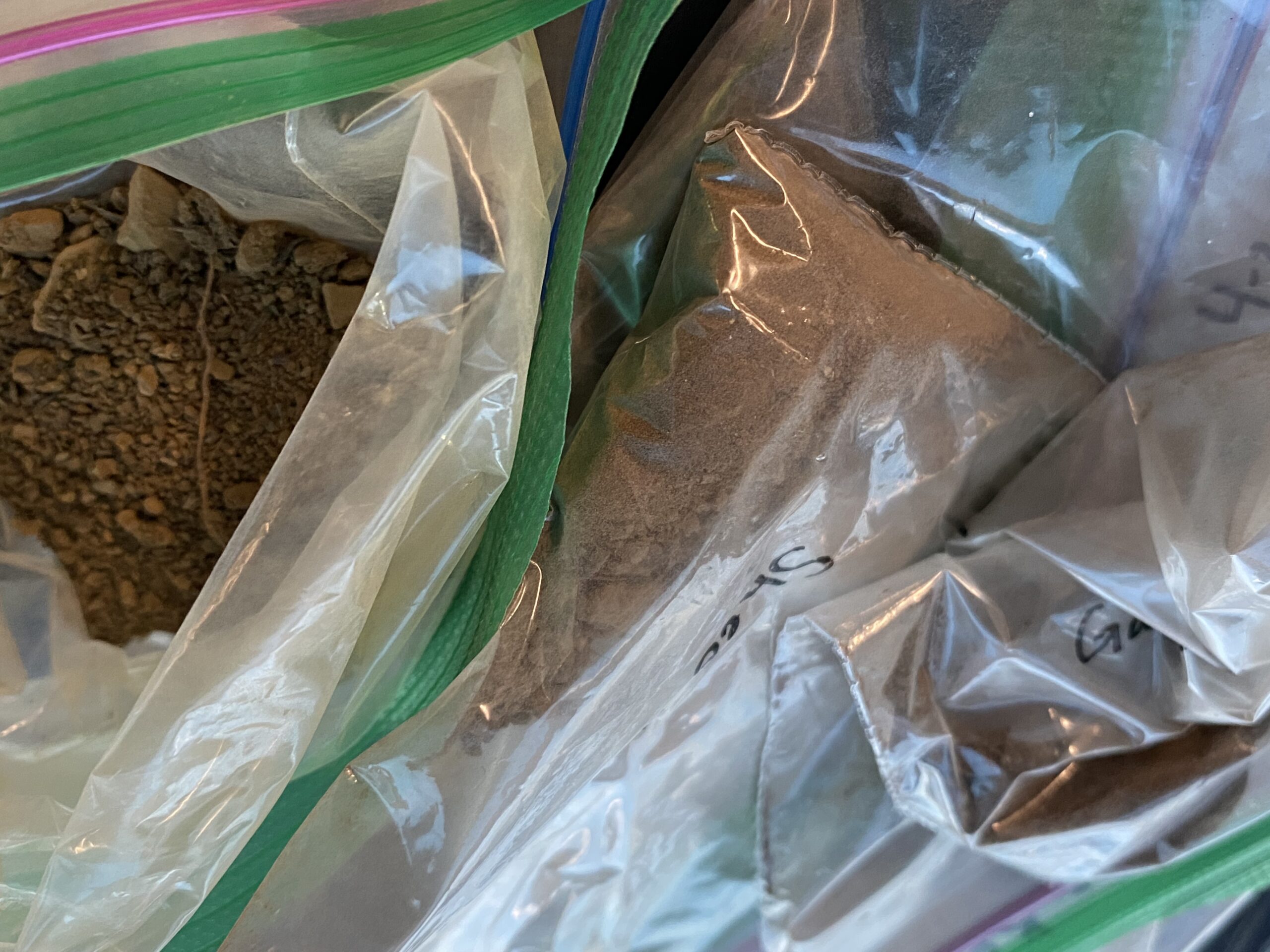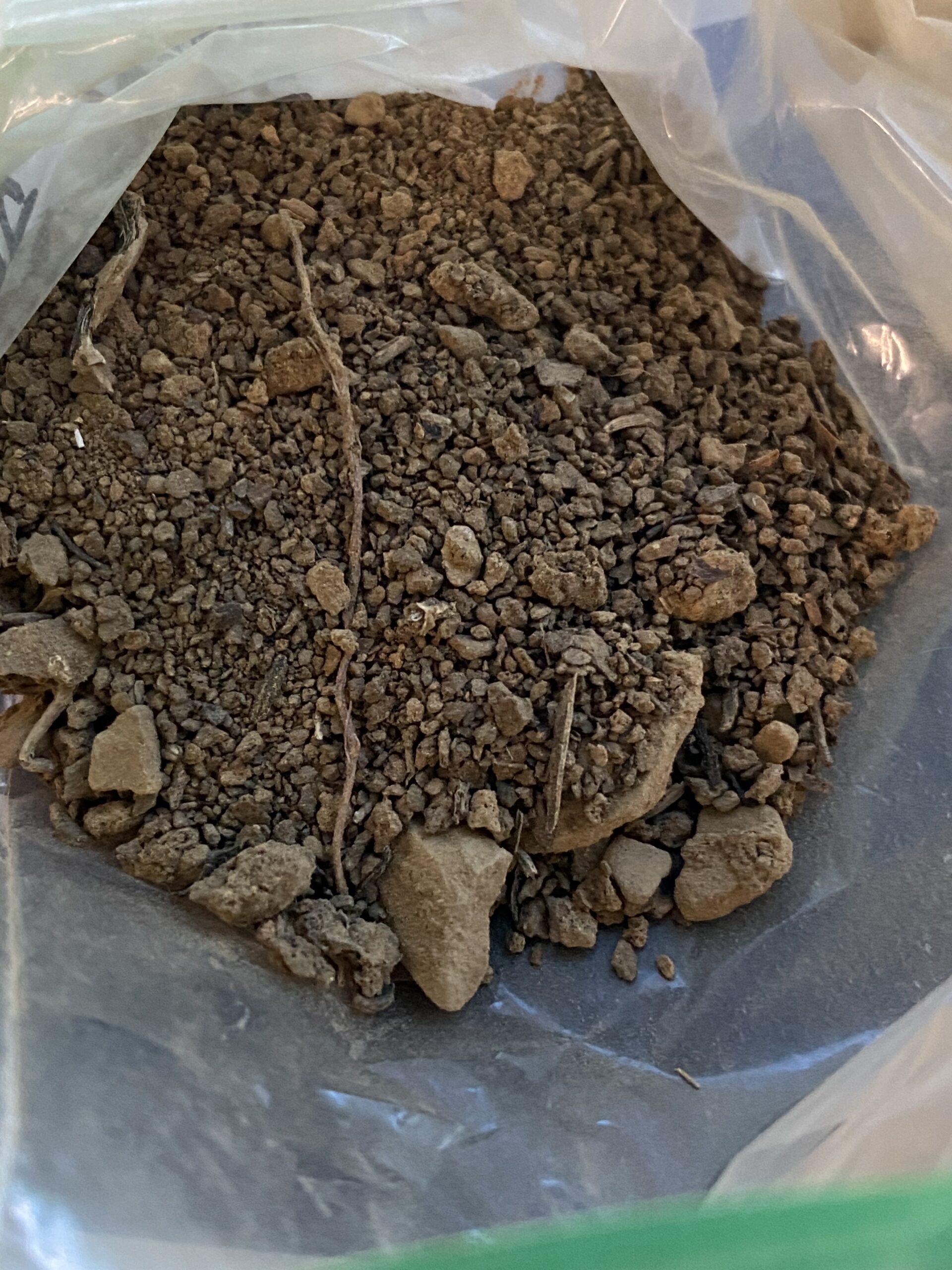Soil sent in by a Lead Safe Mama reader from Kansas (XRF test results, May 2023)
For those new to this website:
Tamara Rubin is a multiple-Federal-award-winning independent advocate for childhood Lead-poisoning prevention and consumer goods safety, and a documentary filmmaker. She is also a mother of Lead-poisoned children (two of her sons were acutely Lead-poisoned in 2005). Since 2009, Tamara has been using XRF technology (a scientific method used by the U.S. Consumer Product Safety Commission) to test consumer goods for toxicants (specifically heavy metals — including Lead, Cadmium, Mercury, Antimony, and Arsenic). All test results reported on this website are science-based, accurate, and replicable. Items are tested multiple times to confirm the test results for each component tested. Tamara’s work was featured in Consumer Reports Magazine in February of 2023 (March 2023 print edition).
Published: May 2, 2023 — Tuesday
Note: IF you are sending soil samples to Lead Safe Mama, LLC for testing, please follow the instructions on the link below very carefully and send no more than one teaspoon to one tablespoon of soil per sample. When larger amounts of soil are sent, especially when surface soil is intermingled with soil under the surface, the readings are not particularly useful — IF there is contamination on the surface, it is less likely to be detected due to the fact that larger samples will likely contain large quantities of non-surface soil, which will dilute any surface level toxicity readings. Thank you. We are not currently accepting samples until at least July 16, 2023.

Summary for this soil sample set below:
Here at Lead Safe Mama, LLC, we like to see areas where children might play test negative for Lead, OR at levels no higher than 40 ppm Lead (if achievable). Grass/ permanent (well-watered/ not dry or dusty) vegetation cover is the best way to address moderately high levels of Lead (above 40 ppm and below 400 ppm) in areas where children may play. Soil removal or other more permanent methods of covering the soil are also options but may be more expensive depending on the location of the home and that particular area’s limitations (urban, desert, “rainforest,” etc.). Please read the links below for more info. Here’s a piece I wrote about how we handled the Lead hazards in the soil at my family’s current home (which has levels in the range of 70 to 200 ppm Lead in some areas close to the structure of our house).
- To learn more about the soil testing we do, click here.
- For information to help you understand and interpret the results below, click here.
Each set of test results below is representing a test for at least 60 seconds on the sample. Samples are tested multiple times to confirm the results. Notes in pink are the location notes from the person who sent me the samples.
Sample One (Garden):
- Lead (Pb): 49 +/- 10 ppm
- Cadmium (Cd): Non-detect/ Negative (nd)
- Tin (Sn): Non-detect/ Negative (nd)
- Mercury (Hg): Non-detect/ Negative (nd)
- Selenium (Se): Non-detect/ Negative (nd)
- Arsenic (As): Non-detect/ Negative (nd)
- Barium (Ba): Non-detect/ Negative (nd)
- Chromium (Cr): Non-detect/ Negative (nd)
- Antimony (Sb): Non-detect/ Negative (nd)
- Nickel (Ni): Non-detect/ Negative (nd)
- Copper (Cu): Non-detect/ Negative (nd)
- Zinc (Zn): 164 +/- 20 ppm
- Manganese (Mn): Non-detect/ Negative (nd)
- Titanium (Ti): 2,851 +/- 960 ppm
- Bromine (Br): Non-detect / Negative (nd)
- Niobium (Nb): Non-detect / Negative (nd)
- Zirconium (Zr): 570 +/- 16 ppm
- Indium (In): Non-detect / Negative (nd)
- Niobium (Nb): 205 +/- 16 ppm
- Iron (Fe): 17,500 +/- 500 ppm
- Platinum (Pt): Non-detect / Negative (nd)
- Bismuth (Bi): 16 +/- 7 ppm
- No other metal was detected.
Sample Two (Front Yard):
- Lead (Pb): 91 +/- 16 ppm
- Cadmium (Cd): Non-detect/ Negative (nd)
- Tin (Sn): Non-detect/ Negative (nd)
- Mercury (Hg): Non-detect/ Negative (nd)
- Selenium (Se): Non-detect/ Negative (nd)
- Arsenic (As): Non-detect/ Negative (nd)
- Barium (Ba): Non-detect/ Negative (nd)
- Chromium (Cr): Non-detect/ Negative (nd)
- Antimony (Sb): Non-detect/ Negative (nd)
- Nickel (Ni): Non-detect/ Negative (nd)
- Copper (Cu): Non-detect/ Negative (nd)
- Zinc (Zn): 255 +/- 32 ppm
- Manganese (Mn): Non-detect/ Negative (nd)
- Titanium (Ti): 2,112 +/- 1,249 ppm
- Bromine (Br): Non-detect / Negative (nd)
- Niobium (Nb): Non-detect / Negative (nd)
- Zirconium (Zr): 439 +/- 18 ppm
- Indium (In): Non-detect / Negative (nd)
- Iron (Fe): 22,700 +/- 800 ppm
- Platinum (Pt): Non-detect / Negative (nd)
- Bismuth (Bi): 28 +/- 11 ppm
- No other metal was detected.
Sample Three (West Yard):
- Lead (Pb): Non-detect/ Negative (nd)
- Cadmium (Cd): Non-detect/ Negative (nd)
- Tin (Sn): Non-detect/ Negative (nd)
- Mercury (Hg): Non-detect/ Negative (nd)
- Selenium (Se): Non-detect/ Negative (nd)
- Arsenic (As): Non-detect/ Negative (nd)
- Barium (Ba): 130 +/- 41 ppm
- Chromium (Cr): Non-detect/ Negative (nd)
- Antimony (Sb): Non-detect/ Negative (nd)
- Nickel (Ni): Non-detect/ Negative (nd)
- Copper (Cu): 56 +/- 32 ppm
- Zinc (Zn): 66 +/- 21 ppm
- Manganese (Mn): 1,350 +/- 243 ppm
- Titanium (Ti): 2,240 +/- 1,240 ppm
- Bromine (Br): Non-detect / Negative (nd)
- Niobium (Nb): Non-detect / Negative (nd)
- Zirconium (Zr): 364 +/- 18 ppm
- Indium (In): Non-detect / Negative (nd)
- Iron (Fe): 47,900 +/- 1,400 ppm
- Platinum (Pt): 75 +/- 41 ppm
- Bismuth (Bi): 40 +/- 13 ppm
- No other metal was detected.
Sample Four (Swing Set):
- Lead (Pb): 293 +/- 28 ppm
- Cadmium (Cd): Non-detect/ Negative (nd)
- Tin (Sn): Non-detect/ Negative (nd)
- Mercury (Hg): Non-detect/ Negative (nd)
- Selenium (Se): Non-detect/ Negative (nd)
- Arsenic (As): Non-detect/ Negative (nd)
- Barium (Ba): 108 +/- 41 ppm
- Chromium (Cr): Non-detect/ Negative (nd)
- Antimony (Sb): Non-detect/ Negative (nd)
- Nickel (Ni): Non-detect/ Negative (nd)
- Copper (Cu): Non-detect/ Negative (nd)
- Zinc (Zn): 1,452 +/- 83 ppm
- Manganese (Mn): 675 +/- 199 ppm
- Titanium (Ti): 2,565 +/- 1,124 ppm
- Bromine (Br): Non-detect / Negative (nd)
- Niobium (Nb): Non-detect / Negative (nd)
- Zirconium (Zr): 428 +/- 19 ppm
- Indium (In): Non-detect / Negative (nd)
- Iron (Fe): 54,900 +/- 1,500 ppm
- Platinum (Pt): 103 +/- 48 ppm
- Bismuth (Bi): Non-detect / Negative (nd)
- No other metal was detected.
Sample Five (Shed/Coop):
- Lead (Pb): 200 +/- 22 ppm
- Cadmium (Cd): Non-detect/ Negative (nd)
- Tin (Sn): Non-detect/ Negative (nd)
- Mercury (Hg): Non-detect/ Negative (nd)
- Selenium (Se): Non-detect/ Negative (nd)
- Arsenic (As): Non-detect/ Negative (nd)
- Barium (Ba): 108 +/- 38 ppm
- Chromium (Cr): Non-detect/ Negative (nd)
- Antimony (Sb): 22 +/- 15 ppm
- Nickel (Ni): 112 +/- 64 ppm
- Copper (Cu): 209 +/- 41 ppm
- Zinc (Zn): 714 +/- 54 ppm
- Manganese (Mn): 397 +/- 201 ppm
- Bromine (Br): 5 +/- 3 ppm
- Niobium (Nb): Non-detect / Negative (nd)
- Zirconium (Zr): 429 +/- 18 ppm
- Indium (In): Non-detect / Negative (nd)
- Iron (Fe): 25,500 +/- 800 ppm
- Platinum (Pt): 69 +/- 42 ppm
- Bismuth (Bi): Non-detect / Negative (nd)
- No other metal was detected.
As always, please let me know if you have any questions. I will do my best to answer them as soon as I have a moment.
Tamara Rubin
Owner — Lead Safe Mama, LLC
#LeadSafeMama
Never Miss an Important Article Again!
Join our Email List











Thank you for posting the soil samples test results! I wanted to ask if you know why some samples tested positive for lead? Is it because there is something on this soil had lead paint on it? Or could these levels be caused by zink fence for example. We have a plot in the community garden in a apartment complex and there is a fence (made of grey metal wire, I guess it is galvanized steel) right by our plot. Can this fence contaminate the soil with lead? I go there every day almost with my kids and wonder about this.
Such an alarming place where lead is coming into our food supply. Thank you for sharing this and the work that you do!
Also, are there any visible signs we can look for with lead? Such as the soil looking heavier or darker in color?
No. But often lighter dustier soil means it has less plant matter content and therefore could be higher in Lead.
T